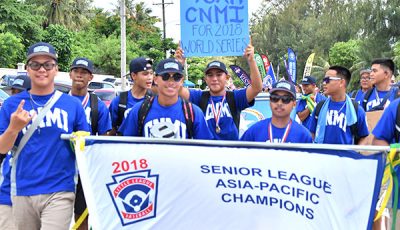Presentation on Chamorro origins this Saturday
The Northern Marianas Humanities Council cordially invites the public to a special presentation by a visiting molecular anthropologist that will be held at 6pm in the Magalahi Room, Grandviro Resort on Saturday, Jan. 23.
In his talk titled “Researching the Origins and Genetic Distinctiveness of Chamorros: A Bi-Parental Analysis,” Dr. Miguel Vilar will explain how he uses DNA to learn about ancient patterns of settlement and migration in Micronesia, as well as inferring the impact of historic events, settlement and resettlement patterns, and demographic changes in the Marianas islands.
In his earlier work, Dr. Vilar presented research based strictly on the maternal lineage, showing that Chamorros were genetically distinct to other Oceanic and Southeast Asian populations, and were only distantly related to these groups.
In this new work he explains how patterns in the paternal lineages (Y chromosome DNA) show similar results, while patterns in the rest of the genome add a historical dimension to ancestry, influenced by centuries of Spanish colonization and the more recent impact of American and Filipino influence on the islands.
Dr Vilar, a molecular anthropologist and science writer, currently serves as the Project Manager for National Geographic’s Genographic Project. His fieldwork has taken him to places throughout the Pacific region, East Africa, Mesoamerica, and the Caribbean.
In the laboratory, Dr. Vilar researches the modern genetic diversity of human populations from Micronesia, Melanesia, Central and South America, and the Caribbean.
In addition to publishing articles in scientific journals and popular magazines, Dr. Vilar also writes the Genographic Project Blog for National Geographic Society website.
This presentation, free of charge and open to the public, is a part of the council’s ongoing Community Lecture Series which strives to offer information on a wide variety of topics of interest to the local community.
Please contact council staff at 235-4785 or visit the council’s website for more information. (PR)

























